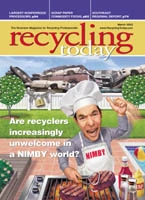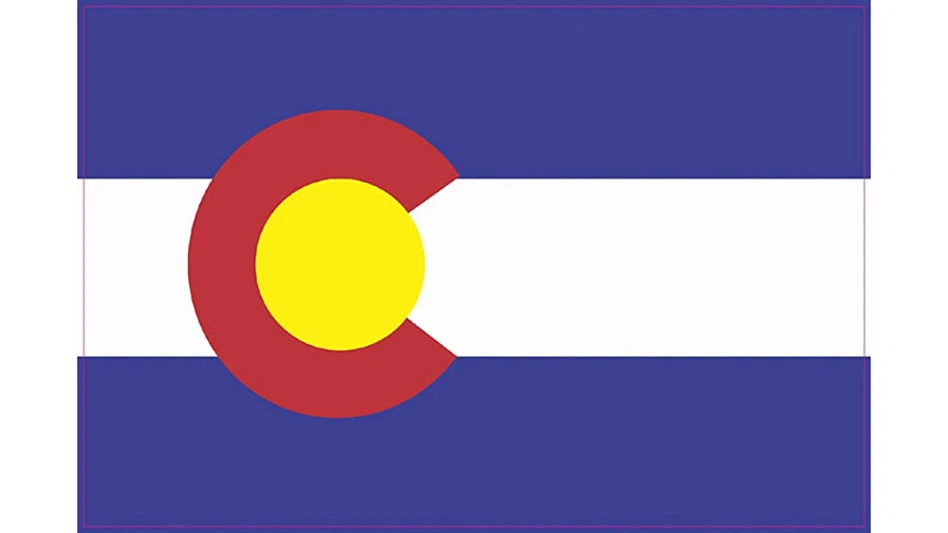Recycling advocates have expressed concern that one of the genuine recycling success stories of recent years—the closed loop for the aluminum used beverage container (UBC)—is beginning to reveal some weak links.
Statistics compiled by a number of different organizations reveal a decline in the UBC recycling rate in the U.S. While different studies compute different overall percentages, all sides seem to agree on the direction of the trend.
Environmentalists who value resource conservation have helped bring attention to the dilemma, but industrial companies that process and melt UBCs probably have the most direct, short-term reason to worry.
One of these, Alcan Aluminum Corp., Montreal, (with U.S. headquarters in Cleveland), recently commissioned a study of U.S. residents to find out if they were aware of the current status of aluminum can recycling.
AN OUNCE OF AWARENESS. Nearly two-thirds of Americans surveyed in the Alcan survey thought recyclability was somewhat or very important when purchasing a container. Unfortunately, these same respondents were not aware that recycling rates have been dropping.
The survey, commissioned by Alcan and conducted by Leger Marketing, Montreal, asked 1,000 Americans about their own UBC recycling habits and their perception of nationwide trends. More than three-fourths of those contacted (81 percent) say they are recycling more or the same number of UBCs as they were five years ago. This perception is at odds with the actual UBC recycling rate in the U.S., which has declined from a peak of 68 percent in 1992 to just 55.4 percent in 2001.
According to Alcan Senior Vice President Martha Finn Brooks, based on a current price of about 53 cents a pound, the 45 billion UBCs that went to landfills last year represents about $750 million in potential lost revenue to scrap recyclers or community recycling programs.
Brooks, who is responsible for Alcan’s UBC recycling and cansheet manufacturing operations in the U.S., says recycling education should be a major focus for the nation.
Alcan’s interest in the matter is direct: the company’s Berea, Ky., facility melts some 11 billion UBCs each year, equivalent to roughly 40 percent of the cans recycled in the U.S. annually. Alcan is believed to be the world’s largest consumer of scrap UBCs.
Brooks says the poll is a first step in understanding the issues involved with the drop in aluminum can recycling.
The good news for recyclers is that those responding were supportive of recycling overall and of government support for recycling. Over three-quarters (77 percent) of respondents replied that local governments should be operating tax-supported curbside recycling programs.
Increasing the number of recycling centers in a community was cited by 22 percent of respondents as a way to increase recycling rates. This was the number one response chosen.
Recyclers may also be encouraged by the support for recycling among younger people. Respondents in these younger age ranges showed the strongest approval of government-supported recycling collection, with 84 percent of those 25-34 years old agreeing that local governments should operate tax-supported curbside programs.
DOWNHILL PATH. Despite the views expressed by Americans in this survey, actions ultimately speak louder than words. As noted earlier, the UBC recycling rate has dropped dramatically since the early 1990s, despite the widespread continuation of curbside recycling programs.
Several culprits for the decline are cited by those analyzing the issue, including the trend toward the single-serve, away-from-home consumption of beverages.
"People are drinking more beverages on the go, away from the convenience of residential curbside recycling bins, and many of these cans are ending up in the garbage," says Jenny Gitlitz, director of research for the Container Recycling Institute (CRI), Arlington, Va.
Suppressed aluminum prices are also pointed to as a culprit. "The value of a pound of aluminum cans to folks who collect scrap cans for cash hasn’t changed much in the past decade, but the value of a dollar has declined," says Gitlitz.
She could have added the cost of fuel to collect and haul a load of UBCs has also increased recently, providing another disincentive.
Scrap recyclers have been lamenting the challenges facing UBC recycling for some time. In an interview published in Recycling Today three years ago ("Moving Forward Wisely," Recycling Today, Jan. 2000), Dick Weaver, president of Wise Recycling LLC, Baltimore, remarked on the difficulties of keeping UBCs flowing into collection sites. "We have a highly employed populace, and there certainly isn’t a compelling economic need to recycle. Most households just don’t need that few extra dollars a week right now to make ends meet," he remarked.
Weaver also noted that a large portion of the established peddlers were older Americans who got their introduction to scrap recycling during the World War II years, when scrap metal collecting was considered a patriotic duty. As those peddlers begin to disappear from the scene, the younger generations have not necessarily followed in their path.
BOTTLED UP. The solution that is obvious to some recyclers is for more states to pass deposit fee "bottle bills" that would cover UBC recycling. The CRI claims the 10 deposit states maintain UBC recycling rates ranging from 70 to 95 percent.
But the introduction of such bills in additional states (or even nationally, as the case with a "national bottle bill" introduced by Vermont Senator Jim Jeffords) is always faced with vigorous opposition by a number of groups, often including bottling companies and retailers.
In the meantime, UBC recyclers and consumers are trying to address the issue within the current political and economic framework.
Annaco Inc., Akron, Ohio, has offered an Earth Day promotion for one week in April each of the past several years. The scrap recycling company doubles its scale price for UBCs as a way of harvesting cans from throughout its market region.
Annaco Executive Vice President William Lowery and nonferrous manager Brian Carlone estimate that the company’s weekly UBC volume explodes tenfold during the week. For 2001, Annaco took in 100 tons of UBCs during the promotional week, compared to an average week’s intake of 10 tons.
Howard Lincoln of Lincoln Metal Processing, Erie, Pa., found another way to raise the profile of UBC recycling in his region. When buying airtime with a regional cable television company, Lincoln created admittedly low-budget ads centered on UBC recycling that featured can-shaped mascots. The ads attracted more attention than Howard Lincoln had hoped they would. "I had people who brought their kids in to see the ‘can people’ mascots, and they became regular customers," says Lincoln.
Earth Day promotions and zany spokespersons may not lift the UBC recycling rate back to its heights of a decade ago.But right now, the scrap recycling and aluminum industries—as well as recycling advocates—are open to any ideas that can help return the UBC to the melting furnace, not the landfill.
The author is editor of Recycling Today and can be contacted via e-mail at btaylor@ReccyclingToday.com.

Explore the March 2003 Issue
Check out more from this issue and find your next story to read.
Latest from Recycling Today
- PET thermoform recycling the focus of new NAPCOR white paper
- Steel Dynamics cites favorable conditions in Q1
- Hydro starts up construction in Spain
- Green Cubes unveils forklift battery line
- Rebar association points to trade turmoil
- LumiCup offers single-use plastic alternative
- European project yields recycled-content ABS
- ICM to host colocated events in Shanghai





